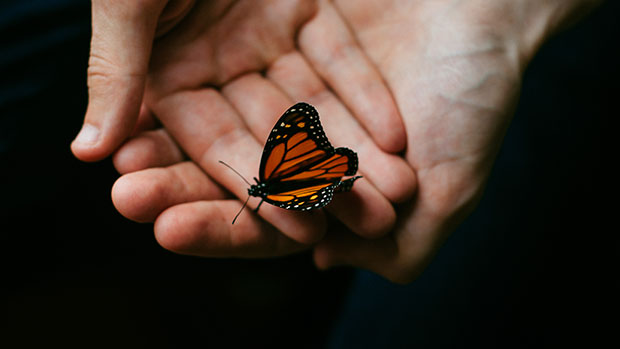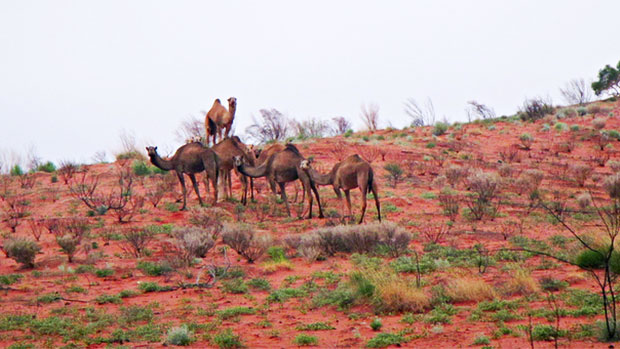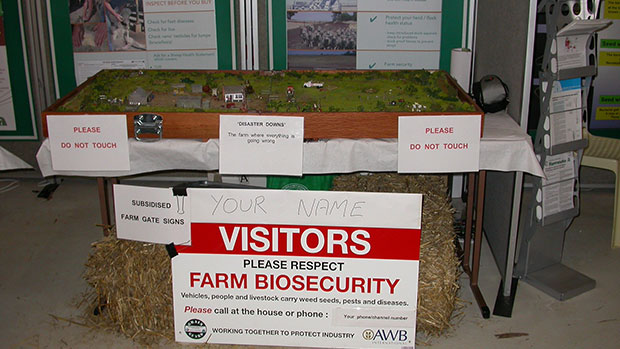Australia’s silent invaders
Expert reviewers
Essentials
- Invasive species cause immense environmental, economic and cultural damage and are the number one cause of native animal extinctions in Australia
- Many introduced species are so established in Australia it is impossible to eradicate them.
- Not all introduced species become invasive—some have a neutral or even positive effect on the environment.
- The combined cost of invasive species (management, control and economic losses) is estimated to be more than $13.6 billion dollars a year.
- Invasive species are one of the biggest environmental problems facing Australia. The challenge is to limit their impacts and prevent new invasive species from arriving.
Australia is home to thousands of remarkable and unique plants and animals. Our country’s isolated position ‘down under’ allowed them to adapt during tens of thousands of years to the perks and perils of our many distinctive environments. But something is now amiss. In the past 250 years, foreign species have been introduced and many are disrupting the established ecosystems that evolution created, with potentially devastating results.
The idea of moving animals and plants across the world is not a new one. The ancient Romans frequently brought back exotic animals from far-off lands for exhibition and, often, for entertainment in the Colosseum. Early explorers and botanists collected specimens and transported them home for further study and display. With the advent of globalisation, the movement of foreign species has accelerated. Millions of people travel across the globe every day, as well as thousands of ships, planes, trains, trucks and cars, often taking known, or unknown, stowaways along for the ride.
More than just rabbits and toads
In Australia, when you hear the term ‘invasive species’ you might automatically think of the rabbit or the cane toad. Perhaps feral cats spring to mind, or the elusive fox. However, the problem is much, much bigger than these well-known offenders.
According to the Australian Museum, since 1770 more than 3,000 non-native species are known to have arrived on our shores. These include animals, birds, plants, insects and other invertebrates GLOSSARY invertebratesan animal lacking a backbone, such as an arthropod, mollusc, annelid or coelenterate. , fungi, parasites and marine creatures. They occur in all habitats across Australia, with some now so entrenched in their new home that many people don’t realise the plant they’re lovingly watering or the bird they’re throwing crumbs to is, in fact, an unwelcome pest.
What makes something ‘invasive’?
When an introduced or non-native species begins to have negative consequences—either environmental, economic or on human health—it is classed as invasive.
The vast majority of introduced species to Australia do not become a problem. Many have a neutral impact. The monarch butterfly for example eats another introduced plant, the milkweed. Occasionally, some species even have a positive effect on the environment. The introduction of dung beetles has helped control fly populations in areas with high cattle numbers, while a variety of non-native earth worms have greatly improved soil quality in many urban areas.
Invasive species aren’t always from outside Australia either. If a species is moved from its natural, native habitat to another part of the country (even within the same state), it too can cause negative effects. The NSW government currently lists more than 40 native plant species as invasive native scrub (INS). Similarly, recent research has shown that sugar gliders, believed to have been introduced to Tasmania last century, have been killing and eating native birds such as the Swift Parrot, contributing to the decline of this species.
There are several stages of invasion: introduction, establishment in the wild (naturalisation), proliferation and spread, and impacts on native species and habitats. For some species this transition takes decades, but for others it’s very quick.
.jpg)
Take the cane toad—within two months of being released into the wild, the original 2,400 creatures had multiplied to more than 24 times that number (57,600!). This explosion in numbers was due to several factors: no natural toad predators, a year-round breeding cycle, and the toad’s omnivorous eating habits. In 2017, the number of cane toads in Australia is estimated at more than 200 million.
A more recent example of the speed at which an invasive species can move across the country is the plant disease Myrtle Rust. Since first being detected in April 2010, it has spread from New South Wales to Queensland, Victoria, Tasmania and the Northern Territory, and is already threatening several plant species.
Other species, such as Athel Pine can have a longer lag time, being present in the environment for decades before reaching a tipping point and exhibiting invasive characteristics. In this instance floods were a key factor to it becoming invasive.
As the stages progress, the likelihood of being able to control or eradicate introduced species is greatly reduced, and the costs are much higher.

How do they get here?
Introduced species can arrive in Australia deliberately or accidentally.
Deliberate or intentional introduction:
- hunting and recreational (e.g. foxes and rabbits)
- exotic pets (e.g. turtles and snakes)
- biological control (e.g. cane toad)
- agricultural or ornamental (e.g. grasses, flowers, shrubs, birds, deer).
Accidental introduction:
- arriving in freight such as shipping cargo (e.g. ants, parasites, fungi, rats)
- unwittingly brought back by travellers (e.g. seeds, souvenirs, fungi in soil on shoes)
- environmental (e.g. strong winds that are thought to have blown the monarch butterfly to Australia).
Regardless of how they arrive, it is often not until a species is here and established that the full consequences of its arrival (positive or negative) become known.

Consequences of invasive species
The negative consequences of invasive species are varied and can range from mild to catastrophic. These include the loss or alteration of native habitats, the killing of large numbers of native species, extinction of native species, impacts on human health, and escalating economic costs.
Loss of habitat
When competing against invasive species, native plants and animals can quickly become displaced from their native environment. African lovegrass, for example, is a highly invasive clump-forming perennial grass, capable of rapid spread due to its vigorous rhizome system. It can form dense infestations that completely eliminate all other plants. Large infestations reduce biodiversity, block access to waterways and present a significant fire hazard.
Alteration of habitat
You may not think an ant could change the environment, but you’d be wrong. Huge super-colonies of the invasive yellow crazy ant on Christmas Island have depleted the native crab population by almost 20 million. The ants kill and eat the crabs and occupy their burrows. The flow-on effect from declining crab numbers has been profound. Weeds have spread, and seedlings previously eaten by crabs have now grown and are changing the forest structure.
Killing of endemic species
Other invasive species alter the ecosystem by killing large numbers of native wildlife. Feral cats are voracious hunters and are a causal factor in the extinction of most of the 30 Australian native mammal species lost since European settlement. While the exact number of feral cats in Australia is not known, conservative estimates put the figure at around 2–6 million. Even taking the lower figure, if two million feral cats are killing several native and non-native animals every night, that number is enormous. When you add other carnivorous invasive species such as foxes, wild dogs, rats and ants, the number climbs even higher.
Invasive species without claws or sharp teeth can do just as much damage. The Chytrid fungus, introduced to Australia in the 1970s, is directly implicated in the extinctions of four species of native frog, and the decline of at least ten others.
Economic cost
The exact economic cost of invasive species in Australia is not known, but we do know it’s big. A study published in 2016 (using data from 2011/12) found the combined estimated cost of invasive species was $13.6 billion in the 2011-12 financial year. This figure takes into account economic losses and the cost of management of invasive species. The authors noted that the figures provided were ‘most likely underestimates of the real values due to the significant constraints of the data available’.
These constraints include multiple providers of funding—local, state and federal government, private organisations and volunteers, lack of accurate reporting and the difficulty in quantifying losses due to invasive species (i.e. a crop failure may be due to multiple factors of which invasive weeds is just one—others may include low rainfall, poor soil quality etc.)
Control and management
Once a species becomes invasive, it often becomes a case of trying to minimise damage through control and management of the population. Total eradication is almost never possible, however, eradication programs for some islands and fenced reserves have had successful results.
Conventional control
Conventional methods of control include trapping, fencing, poisoning and shooting.
- Trapping: appropriate for larger animals such as feral pigs and goats, but not suitable for large-scale pest control (such as rabbits). Traps must also be checked daily to minimise animal suffering and are therefore labour- and cost-intensive.
- Fencing: used to protect specific areas or populations (such as the bilby) from predators. The high cost of fencing—both building and maintenance—means it is only appropriate for use in relatively small or specific areas.
- Poisoning: feral animals such as foxes, pigs and rabbits can be targeted with poison, however there is a risk that other non-targeted animals may be affected. Similarly, poisoning of invasive weeds may kill native plants and smaller invertebrate species.
- Shooting: larger feral animals such as brumbies, goats, pigs and camels are often the focus of targeted shooting programs. In remote areas this can be done via helicopter.

Any of the above methods must be undertaken in humane ways and be target-specific. After all, none of the invasive species asked to be brought here, and the damage they do is merely a consequence of their natural behaviour. Model codes of practice (CoPs) and standard operating procedures (SOPs) exist to minimise suffering and ensure that animals are treated humanely.
Biological control
Although the introduction of the cane toad was an epic failure, biological management of invasive species remains a viable option of control. Thankfully the lessons learned from that disaster have resulted in more stringent tests before any new species is released. Biological control can include using natural predators, disease-carrying bacteria or viruses to manage invasive species. Success stories include the release of the cactoblastis moth, which has successfully reduced numbers of prickly pear, and the calicivirus disease, used to control rabbit populations.
Quarantine and biosecurity
There’s a good reason why biosecurity checks are so thorough when you enter the country, carefully checking your shoes, bags and souvenirs. Foreign seeds, plants or animals knowingly brought back in your luggage, or unknowingly in your cuffs, pockets, or on your shoes (such as disease spores or fungi) can easily take hold in a new environment, as they have done in Antarctica. That seed necklace you bought in Mexico may seem harmless, but it could have dire consequences if it falls off while you’re picnicking in the park and begins to grow. If you're not sure whether you need to declare something for a biosecurity check, then DO! In many cases the product you're carrying will be fine to enter the country, and if it's not you've done the right thing.
Our country’s relative isolation has helped to protect it from invasive species arriving, but as the world continues to shrink due to globalisation, this job becomes harder. Currently Australia is a leader in biosecurity, with tough biosecurity measures in place. Despite this there are still flaws and weaknesses in the system, as demonstrated by the growing number of invasive species in the country. It’s an ongoing battle requiring constant vigilance.
Education and awareness
One of the best ways to reduce invasive species in Australia is through education and awareness campaigns. As mentioned earlier, many people are unaware that certain species are in fact pests. Teaching the public what to look out for and who to report suspect species to is an important step.
Report a biosecurity concern in Australia
Working to change behaviours can also play a part. For example, educating people about why releasing unwanted pets into the wild is not ok, or why bringing seeds back from your international or interstate holiday for your garden is a bad idea. As more people become aware of invasive species and their consequences, they will hopefully modify their behaviour, leading to a gradual shift in the numbers of invasive species in our environment.

Here to stay
The majority of introduced species in Australia are here to stay and, luckily for us, only a fraction of them have (so far) become invasive. Those that have, however, are certainly making their presence felt, negatively impacting many aspects of our unique environment. Controlling and reducing these invasive species is an on-going challenge requiring the combined resources of government and private funding, scientific research, and everyday people-power. So before you continue to water that flower in your garden, take a moment to check that it isn’t, in fact, an invasive weed.





